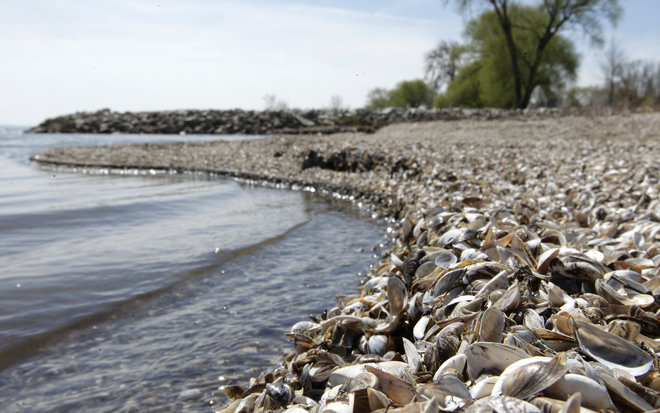
Thompson Smith, chair of the Flathead Basin Commission, has an excellent op-ed in the Flathead Beacon discussing the importance of aggressive efforts to block further spread of invasive mussels throughout Montana’s waters . . .
In early November, state officials announced the first documented presence of zebra and quagga mussels in Montana, after positive tests at sites in the Missouri River system.
For the Flathead Basin, these devastating invasive species are now at our doorstep: just a few hours away for people hauling boats from Tiber Reservoir.
In coming days, our ability to protect Montana’s remaining non-infested waters will be determined by the Aquatic Invasive Species (AIS) legislation and rule-making now being finalized in Helena. What is emerging appears to be a far more robust AIS program, and it should be passed. But the devil is in the details. Experts point to a number of deficiencies that must be addressed.
First, it is important to understand that if invasive mussels do become established here, they would ravage both the aquatic environment and the economy. Tiny, razor-sharp shells would coat and clog every hard surface — rocks, boats, pipes, docks, dams. They could ultimately cause the collapse of native fisheries, a vital cultural resource and linchpin of the recreation industry. They would wreak havoc with irrigation systems, power facilities, and municipal water supply and treatment.
Once established, invasive mussels are virtually impossible to remove. The whole game is prevention.
Our situation is even more dire because an urgent deadline is upon us. AIS experts say people begin moving large numbers of boats around the country right now, in late February and March. A comprehensive system of protection should therefore already be in place.
We’ve applauded Governor Bullock for establishing, in November, an Incident Command (IC) team to address the crisis. The administration’s AIS bill would massively increase funding and establish a new AIS Bureau within Montana Fish, Wildlife, and Parks. Let me be clear: the Flathead Basin Commission (FBC) urges legislators to vote for this important measure — even as we are gravely concerned that it is not enough.
Since 2008, the FBC has helped lead the fight against invasive mussels. We’ve advocated for stronger perimeter defense of Montana, helped shepherd AIS bills through the Legislature, and raised millions in grant funds for boat inspection stations and dog detection teams. Thanks to legislative improvements and the good work of many people, statewide efforts also improved — but still didn’t meet the standard many experts deem necessary.
Today, as Montana is pursuing a dramatic expansion of its program, there are a number of areas of concern, but four are of greatest importance. To protect the Flathead adequately, all must become operational in coming weeks:
1. Vigorous perimeter defense of Montana; inspection of all watercraft entering the state.
2. Comprehensive containment and decontamination of all watercraft coming off the Missouri.
3. A Continental Divide firewall, ensuring inspection of all watercraft heading west from the infested Missouri.
4. A Flathead Basin pilot program of inspection-prior-to-launch for all watercraft.
State agencies will carry out elements of the first three items. Actual effectiveness will be determined not only by funding and early opening, but also by quality of planning and thoroughness of implementation. We’ve expressed many concerns directly to the IC.
The experience of other states proves that multiple layers of protection are essential to catch these tiny, tough invasives. The FBC therefore wants to undertake the fourth item: a Flathead pilot program requiring all watercraft to be inspected prior to launch.
We have gotten by on blind luck for far too long. We can still save the Flathead, and by extension the whole Columbia River system. But the permanent fate of these priceless waters may well depend on what we do right now. Until a comprehensive system is in place, I urge state, tribal and other authorities to close or severely restrict Flathead waters. That may sound draconian. But at this point, anything less would be reckless and irresponsible.
The FBC will continue doing whatever we can to help protect the Flathead, both through our own programs and by coordinating with and respectfully assisting other entities, including Montana Fish, Wildlife, and Parks, the Confederated Salish and Kootenai Tribes, Lake County, the Blackfeet Nation, Glacier National Park, and other governmental agencies and non-profit organizations.
Future generations may look back on March 2017 as a critical moment in our history. We urge you to raise your voice in support of the steps we’ve outlined here. For the Flathead, the time is now — in a way that it never has been before.
Thompson Smith serves as chair of the Flathead Basin Commission, established by the Montana Legislature in 1983 to protect the waters and environment of the Flathead Basin.